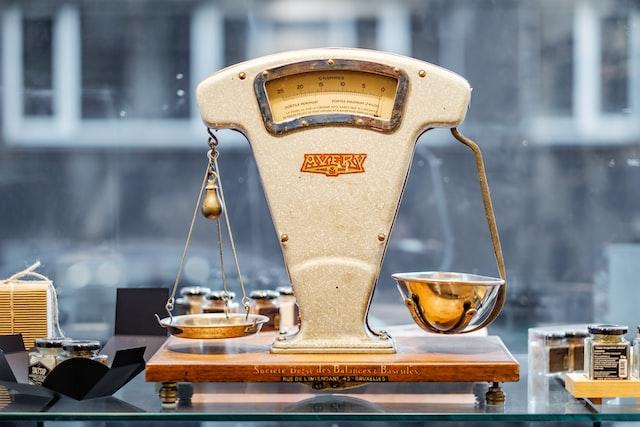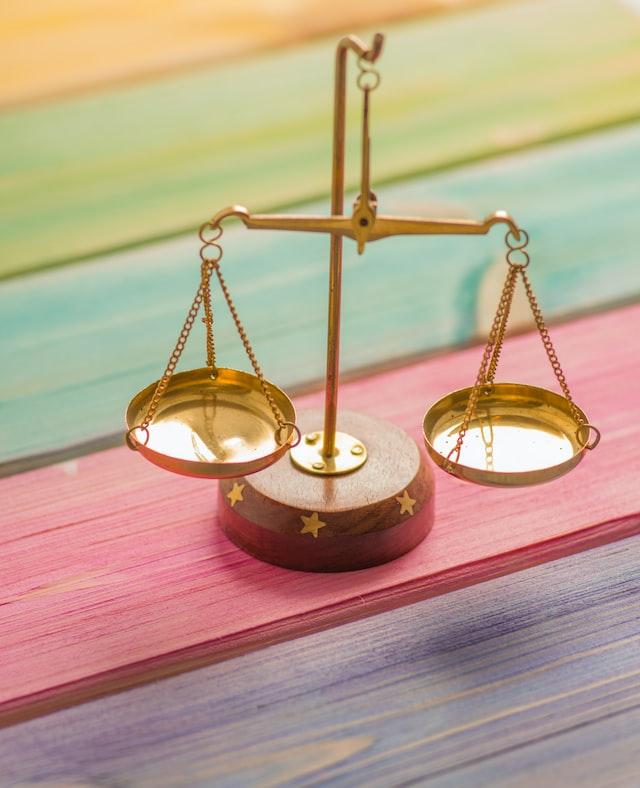What are the Scales of Justice?
Our product recommendations are made independently, but we may earn affiliate commissions if you use a link on this page.
Whether you have a career in law enforcement or not, you are probably familiar with the phrase, “scales of justice.” Most people know that the phrase and symbol represent a sense of justice and fairness, which is what the law is supposed to uphold.
In most cases, the scales of justice are present in a courthouse and other places where the law may be enforced. The visual representation may be of Lady Justice herself, or may just be only the scales, however, the sentiment is the same.
If you are wondering exactly where the scales of justice originated from and what they mean, keep reading below.

What Are the Scales of Justice?
The image for the scales of justice originally appeared as Lady Justice, or the Goddess of Justice standing blindfolded holding a set of scales in one hand and a double-edged sword in the other.
In most cases, you will find this image in most law enforcement agencies, courthouses, and especially in law school textbooks. Over the years, this image has become commonplace in these locations due to what Lady Justice stands for.
In some ways, lawyers and other professionals who work in law enforcement use the symbol to signify that they are bound by profession to have high moral standards. This often gives people peace of mind to know that they will be represented well.
Interestingly enough, there are times that the depiction of the scales of justice appears without Lady Justice. In these cases, the image of only the scales will appear, however, the sentiment is typically the same.
Meaning of the Scales of Justice?
The scales of justice that have been a long-time representation of the judicial system are packed with meaning. For the most part, the symbol exists to not only remind those in the legal profession of their duty to fairness and justice but to also ease the minds of others.
Since the scales themselves are a symbol that means balance, this is to mean that in any case there has to be a balance of evidence. Meaning that all evidence is weighed fairly and it is typically the party that has the most evidence in the case that wins.
The scales also represent the fact that all cases in a court system must be based on fairness and truth. This typically means that the meaning of the truth in a case must be searched for extensively until it is found and weighed against what is not true.
When you look at the scales of justice, it is clear to see that in addition to them being used to showing balance, they also do not affect the other. Meaning that in a court case, it is evaluated on the evidence that is presented by each party without any intervention from the other party.
Fair Evaluation of Evidence Meaning
When it comes to taking a case to be heard by a judge, it is important to remember that they are to be an impartial decision maker in the process. This means that they are typically represented by the scale as a whole to evaluate fairly all the evidence that is supplied before them.
This is why in most court cases the judge has to view each piece of evidence and evaluate whether it is indeed relevant to the case at hand. When a judge makes a ruling on a case, the decision must be made based on the evidence that is presented and no other outside force that may present itself.
As a case is heard, it is up to the lawyers for each party to present evidence that is directly related to the case at hand for the sole purpose of tipping the scale in their client’s favor. In most cases, the party that has the most compelling evidence that demonstrates truth and justice is the side that typically wins the case.
It is important to note that the type of evidence presented in a case can also tip the scale in favor of one party over another. For example, if there is biological evidence or even eyewitness testimony, this is often considered to be hard evidence favoring one party over another.

History Behind the Scales of Justice
Now that you know the meaning behind the scales of justice, it is also important to understand where this representation came from. The symbol of Lady Justice holding the scale while blindfolded and holding a sword has its origins dating back to Ancient Greece and Rome.
It is said that the Greek Goddess of Justice, Themis, was often depicted holding a set of scales, but not a sword and she was also not blindfolded. Although this is true, the image still represented a sense of fairness and truth of evidence that should be weighed against what is not true.
In Ancient Rome, the Roman Goddess of Justice, Justitia, is the symbol that is also depicted as a representation of truth and justice. Justitia is shown holding the scales, which symbolize fairness, a sword to show that the guilty should be punished, and is often shown blindfolded to symbolize the prevention of any prejudice that may occur in a case.
There was even a representation of this idea in Ancient Egyptian culture that represented the same fairness of truth and justice. Maat, the Egyptian Goddess, was a symbol of not only truth and justice but also order.
Overall, the modern depiction of the scales of justice is often seen and demonstrated in many different ways but means the same thing. No matter if you see the symbol of the scales with the Goddess or not, it still speaks to the fairness that is expected in each court case to bring out the truth and to provide justice to all parties involved.

Breakdown of the Image Representation of the Scales of Justice
Since the scales of justice have been around since the beginning of the justice system dating back to even Ancient times, it is important to understand what it means. To do this, it is essential to break down each piece of the scales of justice to gather the full spectrum of its meaning.
As a whole, there have been many people throughout history that have taken Lady Justice and what she represents as being contradictory. However, it is essential to understand that like with any symbol used to represent something, it should not be taken but only as a symbol of what is intended.
Interested in learning more about the different parts of the scales of justice and what they represent? Keep reading to find out more.
Scales
In most disciplines, a scale is used to weigh something or someone to find out more information about them. This is true whether it is a scale to weigh people or various items that you want to know how heavy or light it is.
The weight of something or someone is typically then taken and measured against something else to make a comparison. In the case of the court system, the evidence that is presented in a case is measured and compared to other evidence.
Since this is the case, the scales are representative of both parties in a given case that are presenting evidence to be evaluated fairly by either a judge or jury. As the case goes on, the scales can be tipped one way or the other depending on the quantity and quality of evidence.
Keep in mind that the scales as a whole represent fairness within the judicial system to show that all evidence will be considered. This means that the presumed guilty party will not be railroaded in a case but will be heard fairly with evidence for and against them.
Blindfold
The blindfold that is worn by Lady Justice, which is seen in most modern depictions of the scales of justice, represents the impartiality of any given case. This means that all evidence should be considered without judgment or any outside force interfering.
The blindfold is also a symbol that no matter who you are, you will be given a fair trial that is not based on your age, race, ethnicity, or whether you are rich or poor. The truth will be based on the evidence that is presented in the case and not on who the individual is.
Although the counter argument exists that a sense of impartiality must exist since the judge and jury is not blindfolded, it is a symbol to represent the fairness that is to be adhered to. Meaning that a judge must swear an oath before taking their position that they will uphold the law no matter what.
Sword
The sword that is often seen in the depiction of the scales of justice goes back to Lady Justice, or Justitia from Ancient Rome who is seen carrying a double-edged sword. This representation is to show that justice is not only fair but is meant to provide swift punishment to the guilty.
The sword exists to show that the entire symbol is based on truth and fairness, but will also serve as punishment for those who do not follow the letter of the law. Keep in mind that this is the basis of operating a safe and orderly society.
Although the double-edged sword often has negative connotations, the representation in the scales of justice serves as a reminder that in any civilized society, truth, justice, and fairness will prevail.
Reference Legal Explanations
If you use any of the definitions, information, or data presented on Legal Explanations, please copy the link or reference below to properly credit us as the reference source. Thank you!
-
<a href="https://legal-explanations.com/blog/what-are-the-scales-of-justice/">What are the Scales of Justice?</a>
-
"What are the Scales of Justice?". Legal Explanations. Accessed on December 11, 2024. https://legal-explanations.com/blog/what-are-the-scales-of-justice/.
-
"What are the Scales of Justice?". Legal Explanations, https://legal-explanations.com/blog/what-are-the-scales-of-justice/. Accessed 11 December, 2024
-
What are the Scales of Justice?. Legal Explanations. Retrieved from https://legal-explanations.com/blog/what-are-the-scales-of-justice/.